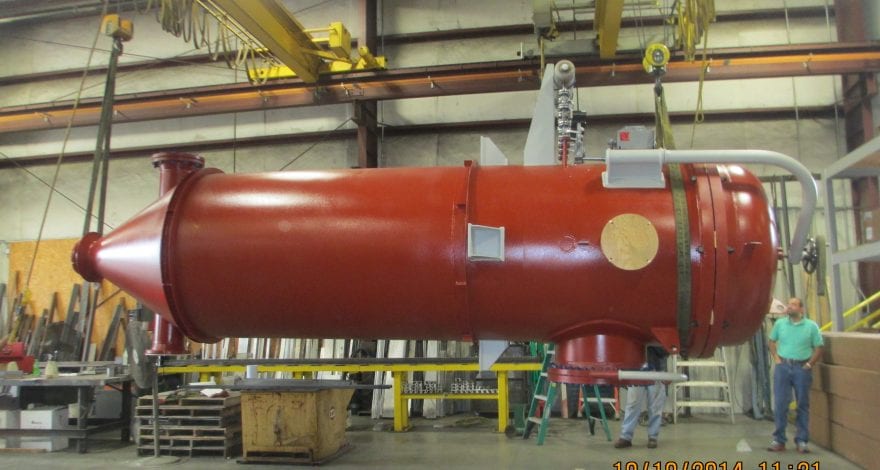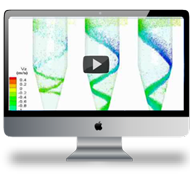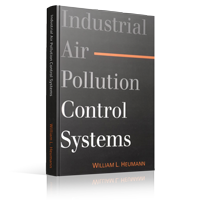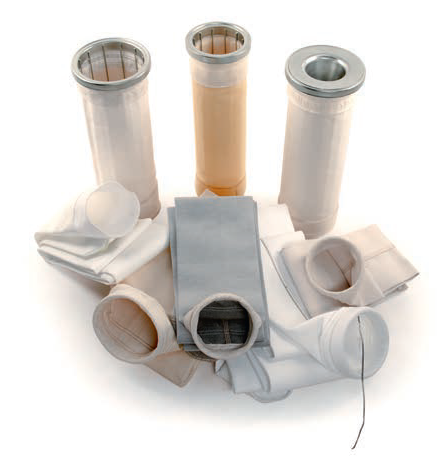
Centuries of Baghouse Innovation
In the vast field of dust collection and pollution control equipment, there is none more ubiquitous or recognizable than the baghouse.
“Baghouse” is a generic term for a collector that utilizes filter elements to separate particles from a gas stream. When first introduced to the industry, these collectors utilized woven fabric socks or bags enclosed in housing, hence the name “baghouse.”
Since their introduction, baghouses have become the default collection solution for many applications due to advances in two primary areas. These are…
- Emission reduction through ever increasingly efficient particulate collection & filter media.
- Increased functional capacity through design evolution, resulting in reliable, continuous operation.
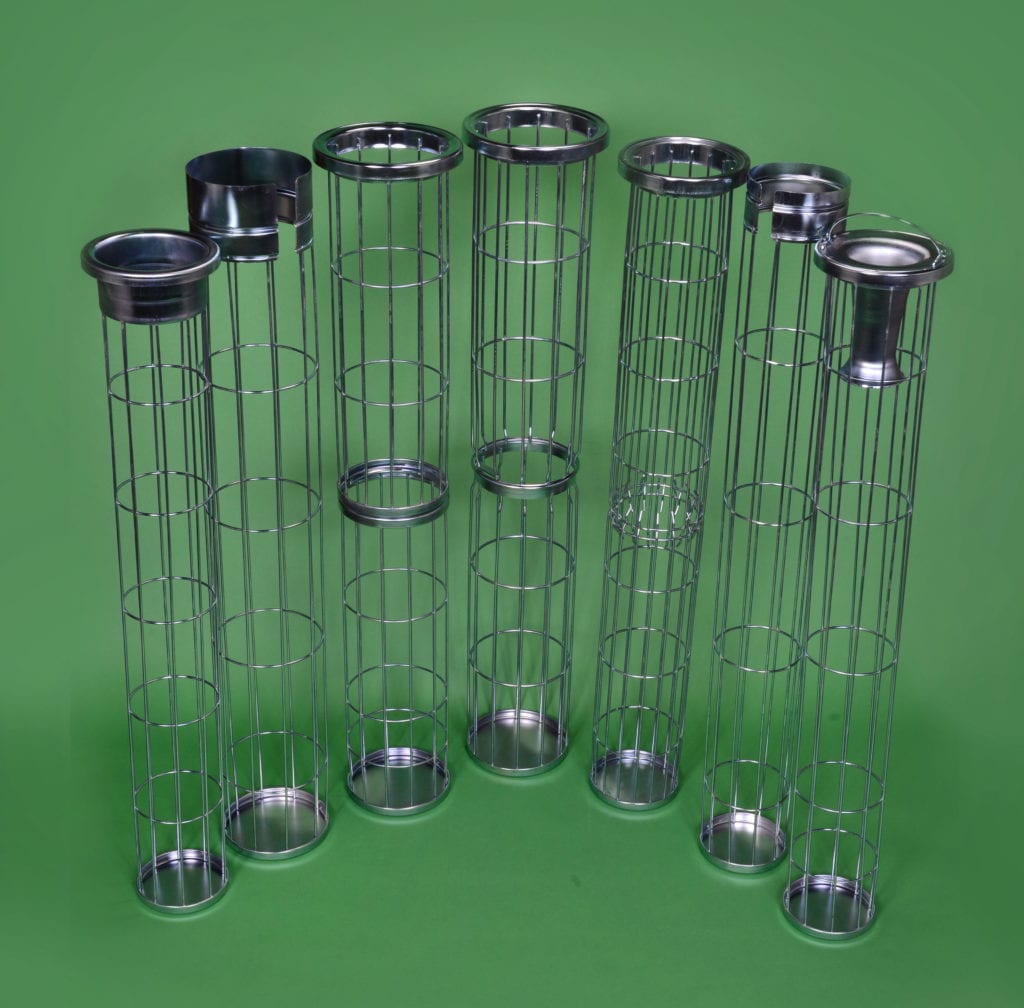
Developments in filter media technologies over the last century have resulted in baghouses which collect as much as 99.9% of particles as small as .3 micron (µ) in diameter. These filtration refinements are the result of improvements in the fabric structure from woven to felted textiles. These advancements were later followed by applying treatments, coatings, and membranes to the surface of the filter bags. In addition, alternative media have come into widespread usage. These include cellulose (paper), ceramic, and sintered or porous metals. In addition, the conventional bag is often replaced by more complex shaped “cartridges” instead of bags supported by a separate metal cage.
The value of the baghouse was immediately apparent for industrial purposes, and configurations quickly evolved that were designed to capture particulate on the outside of the filter socks (vs the inside). This allowed for economical implementation of filter cleaning as described below. Furthermore, to prevent the differential pressure from collapsing the filter bag, metal cages were introduced to support the filters from the inside.
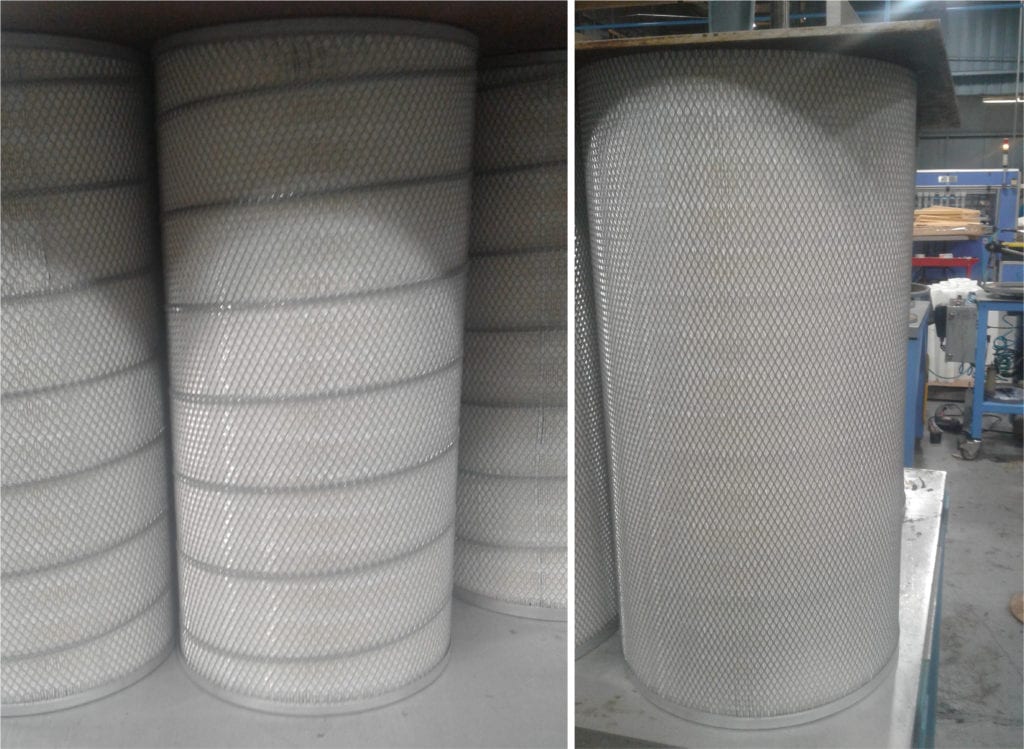
Regardless of the filter media selected, the development of systems with the ability to clean filters effectively and conveniently, without needing for the collector to be shut down for cleaning, has resulted in the economical usage of baghouses in a vast array of industries including:
- Petrochemical
- Petroleum refining
- Pneumatic transfer and conveying
- Explosive Dust
- And others…
Cleaning a Baghouse
There are several methods for cleaning the elements of a filter. The first is to use a reverse flow of cleaning gas which is forced in reverse direction through the filter elements, “blowing” or “backwashing” the dust off the surface of the filter elements. Reverse flow cleaning requires that the normal flow through the filter be closed off during the cleaning process. However, the most commonly used method for cleaning filter elements is the “pulse jet” cleaning system.
The pulse jet cleaning system operates by directing a short blast of compressed gas through an opening and down into the outlet at the top of the filter. As this compressed gas jet exits this opening, it accelerates to a high velocity (sometimes supersonic). As it expands into the cylindrical cross section of the inside of the filter element, this gas induces or pulls surrounding gas with it like an ejector. Pulse jet cleaning systems cause the filter being cleaned to be “off-line” for a brief instant while the gas flow direction is reversed. In addition to the cleaning provided by the reverse flow of gas, when flexible filter elements (e.g., bags) are used, a visible shock wave of gas travels down the filter element when cleaning. This shock wave can greatly enhance cleaning sticky materials off the surface of the filter element by jarring them free.
Pressure Vessel Baghouse
Pressure vessel baghouses function just like a standard filter baghouse, except that their housing can withstand pressure or vacuum beyond normal commercial standards. Many baghouses for industrial usage are designed for low pressure (+/- 1 PSIG), low particulate loading (less than 50 grains/ft3) and/or low temperature (less than 450 °F).
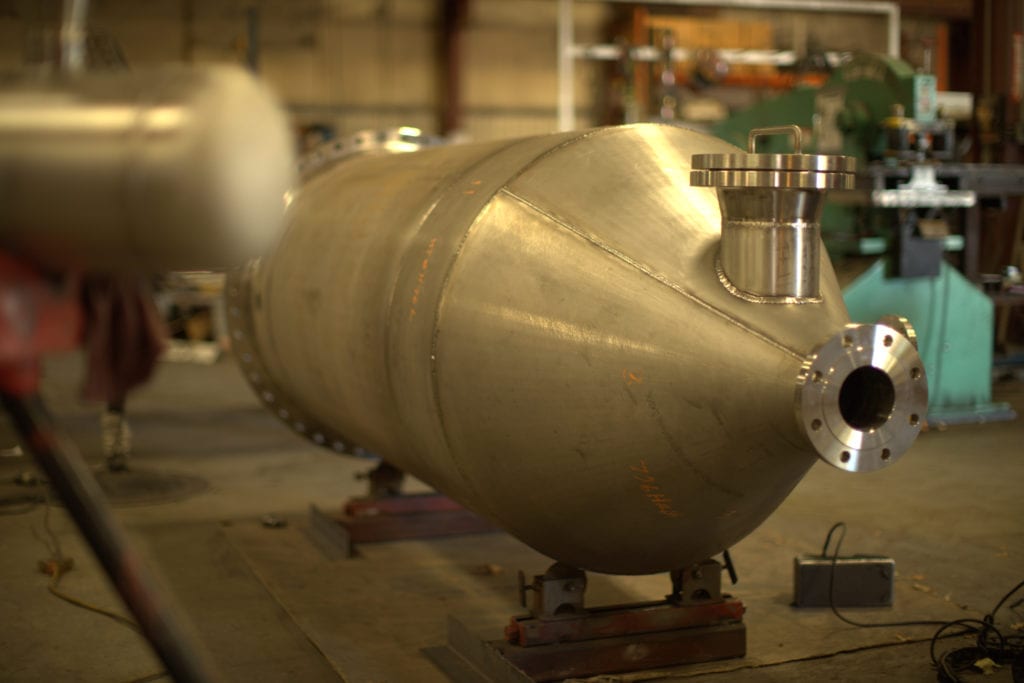
Heumann Environmental specializes in baghouses capable of operating under the most severe conditions, including pressure vessel baghouses and high temperature baghouses. Our engineers have experience with the design, fabrication, and supply of baghouses designed for up to 650 PSIG and as low as full vacuum. These more extreme pressure requirements may be the result of the normal operating pressure of a process or system, but can also be the result of upset cases such as dust or gas explosions. Either way, each collector can be custom engineered and expertly fabricated to meet the specific requirements of almost any process.
The shop at Heumann Environmental is a pressure vessel shop with the coveted ASME “U” and “R” Code Stamps for ASME Section 8 Division 1 Unfired Pressure Vessel Code. This allows us to manufacture in-house, as wells as alter and repair existing baghouse collectors. Our pressure vessel expertise ensures our engineers are intimately aware of superior design fabrication criteria for these collectors if they are to be built in other shops.
